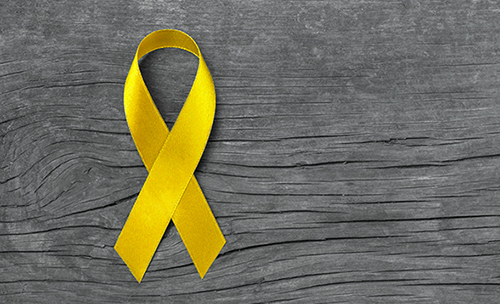Suicide is a topic that is hard to talk about but can directly impact our lives in heartbreaking ways. The statistics on the rates of suicides in the United States are sobering. In 2016, an American died of suicide every 12.3 minutes, with over one million attempts annually. Suicide is the 10th leading cause of death in the United States.*
We live and work in a stressful environment where both employees and students are dealing with a lot of expectations and encountering tragedies and suffering on a daily basis. With the additional stressors that we may be experiencing in our home lives, our mental health can be vulnerable.
During the month of May, which is Mental Health Awareness Month, we are encouraged to take stock of our own mental health as well as be aware of how those we interact with may be doing.
Suicide is 100 percent preventable and the most important protective factors are connection and support. Are we paying attention to ourselves and reaching out for help when we need it? Are we noticing how those around us are doing and offering connection and support? Do we even know what to look for and how to talk about suicide with those who may be at risk? Do we know what resources are available?
What to watch for
First of all, how do we know if ourselves or others may be at risk for suicide or depression? There are several things to watch for, including:
- Changes in mood or behavior — more angry, anxious, withdrawn, reckless
- Feeling hopeless, desperate, trapped
- Thinking about wanting to die
- Missing work or school frequently
- Reporting increased stress
- Increased drug or alcohol use
Any significant changes in functioning or behavior are signs that tend to indicate that the person is experiencing distress and would likely benefit from connection and support.
How to talk about it
It is important to ask questions directly if you have concerns because you have noticed some of the signs listed above. A good example of how to open the discussion is: “I have noticed you have been feeling hopeless a lot lately (give examples of what you have observed). Sometimes when people are feeling this way they think about committing suicide. I wonder if you have been thinking about suicide?”
You will not be putting an idea into someone’s head by talking directly about suicide, and usually if someone has had suicidal thoughts it is a relief to be able to talk about it. If the person admits to these thoughts, the immediate response should be “Thank you,” closely followed by “We will figure this out together. I have some ideas that can help.”
Do not ask questions in a way that indicate you want “no” as an answer, such as: “You aren’t thinking of hurting yourself, are you?” or “You’re not thinking about doing something stupid, are you?” Also don’t promise to keep anything a secret. A person’s life is more important than keeping secrets or not wanting to upset them.
What to do next
Once a person is talking about their suicidal thoughts, it is important to develop a plan with them. First assess whether they have a specific plan of how they would kill themselves and whether they have the means to do so (“How have you thought of killing yourself?” “Do you have any weapons or prescription medications in the house?”). Next, ask if they have a support system to reach out to if they become actively suicidal (“Is there someone you could talk to if you were actively suicidal?”).
Discourage them from using alcohol or drugs, as this can exacerbate the likelihood of committing suicide. And finally, encourage them to seek professional help. A great place for both employees and students to start seeking help is with the Employee & Student Assistance Program (909-558-6050, or ext. 66050). The team can provide free and confidential emergency assessment and interventions and ongoing support to help in the recovery process from depression and suicidal thoughts. Another important resource is the National Suicide Prevention Hotline (1-800-273-8255), which is available 24/7.
Additional resources
There are a number of online and app-based resources available including:
- SAMHSA’s Suicide Safe App (store.samhsa.gov/apps/suicidesafe/)
- Free app designed for healthcare providers on how to talk with patients who may be suicidal.
- Resources for locating treatment options and filtering by type/distance for referrals.
- Virtual Hope Box App (available for both Apple iOS and Android)
- Provides help with emotional regulation and coping with stress via personalized supportive audio, video, pictures, games, mindfulness exercises, positive messages, activity planning and other tools.
- Suicide Prevention Awareness Website (www.suicideispreventable.org)
- Guidance on what to look for, how to ask questions and provide help.
Besides providing direct support, the Employee & Student Assistance Program is also able to provide on-site trainings for staff on suicide prevention. Feel free to call to schedule a training in your department (909-558-6050, or ext. 66050).
We have the capacity to ensure that suicide never happens again in our community. By paying attention to our own mental health and the mental health of those around us, by reaching out to each other and seeking and offering support and connection, we can attain this goal of never losing one of our own to suicide again.
—Jana Boyd, PhD, LMFT, is director of the Employee & Student Assistance Program at Loma Linda University Health.

*Reference
American Foundation for Suicide Prevention (AFSP) (2016). “Suicide statistics.” Retrieved from: afsp.org/about-suicide/suicide-statistics.

